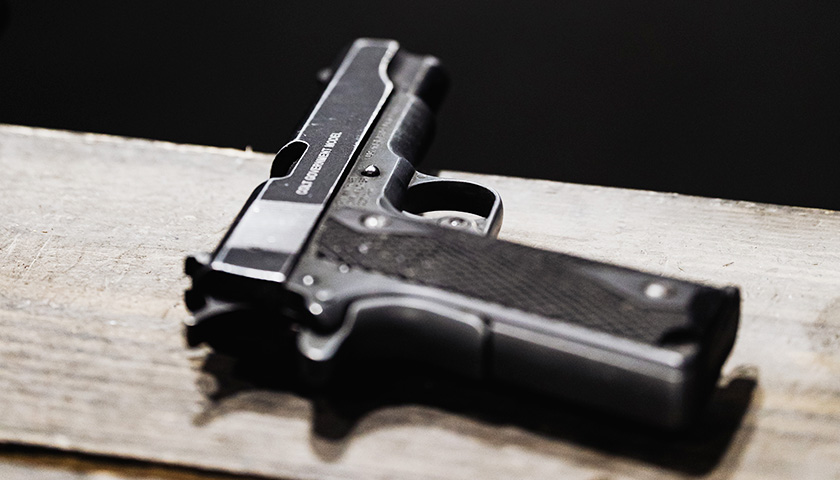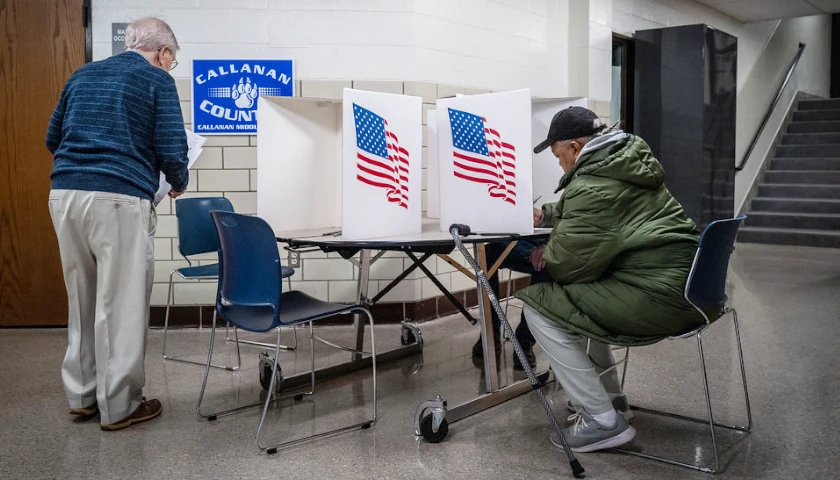A new federal Bureau of Alcohol, Tobacco, Firearms and Explosives’ (ATF) rule on pistols with stabllizing braces faces a Second Amendment lawsuit filed on behalf of disabled veterans.
The Wisconsin Institute for Law & Liberty (WILL) filed the complaint Tuesday in the U.S. Northern District of Texas Amarillo Division. It alleges the rule, which re-categorizes up to 40 million pistols with stabilizing braces as “short-barreled rifles,” not only violates the Second Amendment, it runs afoul of the Separation of Powers. Federal agencies are barred from making new laws without clear congressional authorization, and the lawsuit alleges ATF’s rule is the Biden administration’s latest attempt at usurping the legislative branch’s power.
WILL’s lawsuit is the first in the nation to challenge ATF’s new rule, and it’s WILL’s sixth lawsuit against the Biden administration, according to the Milwaukee-based public interest law firm.
Stabilizing braces, invented to help disabled veterans fire their pistols safely, is an accessory that can be installed on a pistol. It attaches to the user’s forearm to stabilize the pistol against the user’s arm, resulting in more accurate shooting and greater comfort for the user.
The new rule follows on President Joe Biden’s gun control pledges in recent years. It would effectively treat pistols with braces accessories like short-barreled rifles, more stringently regulated since the early 1930s.
ATF’s new rule requires millions of Americans to register these firearms on a federal registry and pay a tax, according to the lawsuit. Anyone in possession of a pistol re-classified by ATF as a “short-barreled rifle” is immediately in violation of the NFA and faces a $10,000 penalty or up to 10 years in prison.
“Americans who do not wish to be placed on a federal gun registry must either destroy their stabilizing brace or turn in their weapon. Non-compliance with this federal-registration requirement will threaten millions of Americans with fines and imprisonment,” WILL stated in a press release.
Veterans Take a Stand
Earlier this month, the Department of Justice announced it was submitting to the Federal Register the “Stabilizing Braces” Final Rule, “which makes clear that when manufacturers, dealers, and individuals use stabilizing braces to convert pistols into rifles with a barrel of less than 16 inches, commonly referred to as a short-barreled rifles, they must comply with the laws that regulate those rifles, including the National Firearms Act.”
Attorney General Merrick Garland said the rule is designed to keep communities safe from gun violence, and more government regulations tied to the nearly century-old National Firearms Act of 1933 and the Gun Control Act of 1968 will do just that.
The lawsuit alleges the rule is unconstitutional.
“The Biden Administration has no power to re-classify pistols as rifles, and we will vigorously defend the Second Amendment in federal court,” said WILL Deputy Counsel Dan Lennington.
Plaintiffs Darren A. Britto, of Amarillo, Texas, Gabriel A. Tauscher, of Oconomowoc, Wisconsin, and Shawn M. Kroll, of Hartland, Wisconsin, are decorated war veterans.
Tauscher served in the U.S. Marines and was deployed in the Global War on Terrorism, In 2020, he was ambushed and shot 15 times in Minneapolis, according to the lawsuit. He spent 85 days in the hospital, enduring multiple surgeries and requiring 20 pints of blood. Tauscher owns a pistol with a barrel less than 16 inches and a stabilizing brace, which he uses for personal protection and recreation, the lawsuit states.
Britto, a decorated Marine combat veteran who served with distinction in Somalia, Afghanistan, and Iraq, also owns a pistol with a stabilizing brace.
“Mr. Britto uses this firearm for personal defense, competitive sport shooting, recreation with his family, and as part of employment as a firearms instructor certified by the NRA and the State of Texas,” the lawsuit states.
Kroll, a decorated Marine combat veteran who served in the War in Afghanistan from 2009 to 2010, uses a stabilizing brace “because it makes the firearm more accurate and therefore safer.”
“These military veterans defended our country overseas, and now they are defending our rights here at home,” WILL’s Lennington said.
ATF’s Change
As the lawsuit notes, ATF more than a decade ago made clear that the mere installation and use of a stabilizing brace does not bring a firearm under the purview of the National Firearms Act.
In a clarification letter in 2012, ATF stated a stabilizing brace when attached to a weapon “does not convert that weapon to be fired from the shoulder and would not alter the classification of a pistol or other firearm.” In short, a brace is not a “shoulder stock,” which is designed and intended to be fired from the shoulder.
The agency has reaffirmed that position multiple times over the years.
“Based upon ATF’s repeated and explicit approval of stabilizing braces, millions of Americans have purchased firearms with such a stabilizing brace, or have installed a stabilizing brace on their existing firearms,” the lawsuit states.
Under its new rule, ATF creates “other factors” that lump pistols with stabilizing braces into the same categories of guns designed or intended to be fired from the shoulder, and regulated as such. ATF’s language puts the rule at odds with the law’s statutory definition of a rifle, the lawsuit claims.
The changes come out of Biden’s 2021 political pledges to target such guns and accessories following mass shootings in Colorado and Ohio.
Strong-armed Options
ATF says gun owners impacted by the rule have “options.” They can:
- Remove the barrel and attach a 16-inch or longer barrel, which ATF says will remove the firearm “from the scope of the National Firearms Act.”
- Register the firearm as an NFA firearm by submitting the ATF Form 1, thereby being listed in the National Firearms Registration and Transfer Record database. The statutes require the payment of a $200 tax as well, but ATF has said it will forgo collecting those taxes as part of their “discretion.”
- Permanently remove and dispose of or “alter” the stabilizing brace so that it may not be re-installed.
- Surrender the firearm to a local ATF office.
- Destroy the firearm.
“The Rule forces Plaintiffs to either comply with ATF’s demands within 120 days or risk criminal penalties, including up to 10 years in prison, all for owning a device that ATF has repeatedly and affirmatively approved going back more than a decade,” the lawsuit states.
– – –
M.D. Kittle is the National Political Editor for The Star News Network.
Photo “Gun” by Karolina Grabowska.




